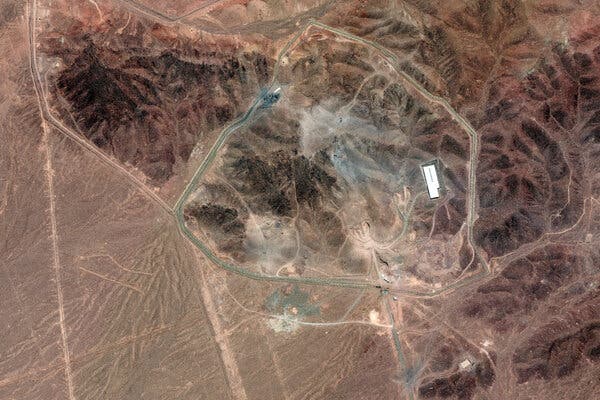
The Fordo Nuclear Site in Iran has suffered extensive damage due to a series of airstrikes conducted by the U.S. military last month. According to a recent assessment by American intelligence, the strikes involved the deployment of 12 powerful bombs dropped by U.S. Air Force B-2 bombers, which may have significantly impaired or even destroyed critical infrastructure at the facility.
The Fordo site, which is deeply buried and regarded by Iran as one of its most secure and advanced nuclear enrichment facilities, was hit hard during the strikes. While two other nuclear sites targeted in the same operation experienced less damage, key facilities necessary for the fabrication of nuclear weapons were destroyed. U.S. officials indicated that rebuilding these essential components could take years.
Despite the significant damage inflicted, U.S. officials stated that the attacks likely did not eliminate Iran’s stockpile of near-bomb-grade fuel. This fuel, capable of producing as many as 10 nuclear weapons, remains a concern. Nevertheless, without the means to fabricate a nuclear weapon, the fuel’s utility diminishes, even if Iran manages to recover it from the wreckage.
Assessment of Damage and Future Implications
The new American intelligence assessment sheds light on the impact of the coordinated strikes by both Israel and the United States. The Fordo facility’s compromised functionality could hinder Iran’s capability to produce nuclear fuel for an extended period. U.S. and Israeli officials believe that Iran retains a stockpile of uranium enriched to 60 percent purity, just shy of the threshold typically associated with nuclear weapons. However, they assert that this stockpile is likely buried under debris, making it challenging for Iran to access.
Israeli officials have pointed out that the only accessible uranium stockpile may be located at Iran’s nuclear laboratory in Isfahan, which also faced strikes. The critical question surrounding the extent to which these airstrikes have hindered the broader Iranian nuclear program remains a subject of ongoing debate within the U.S. government. Analysts are keenly observing how this situation will evolve and what it could mean for regional stability and global security.
As discussions continue, the implications of the strikes on Iran’s nuclear ambitions and the geopolitical landscape are significant. The effectiveness of the U.S. military actions in curtailing Iran’s nuclear capabilities will likely influence future international relations and policy decisions regarding nuclear proliferation in the Middle East.







